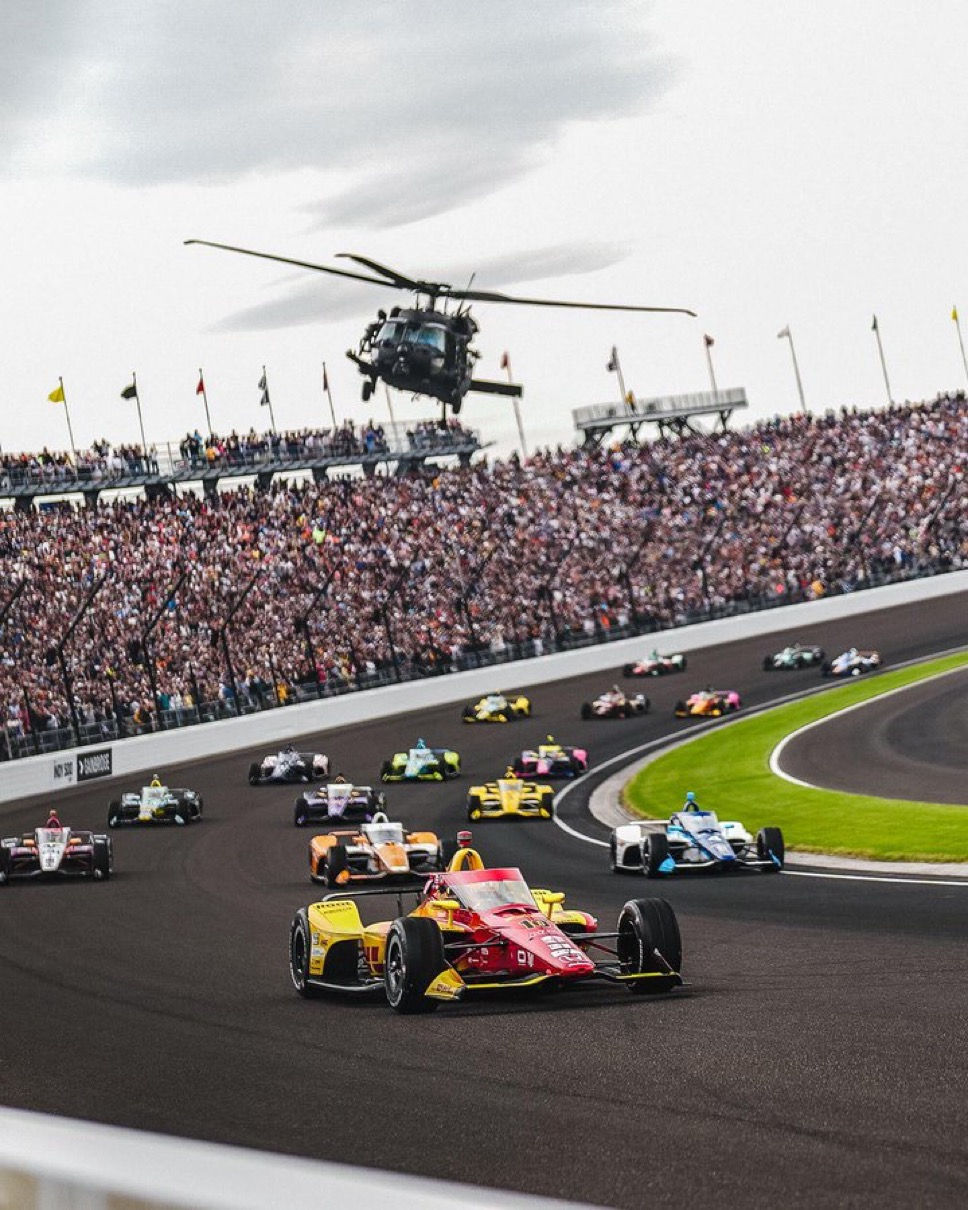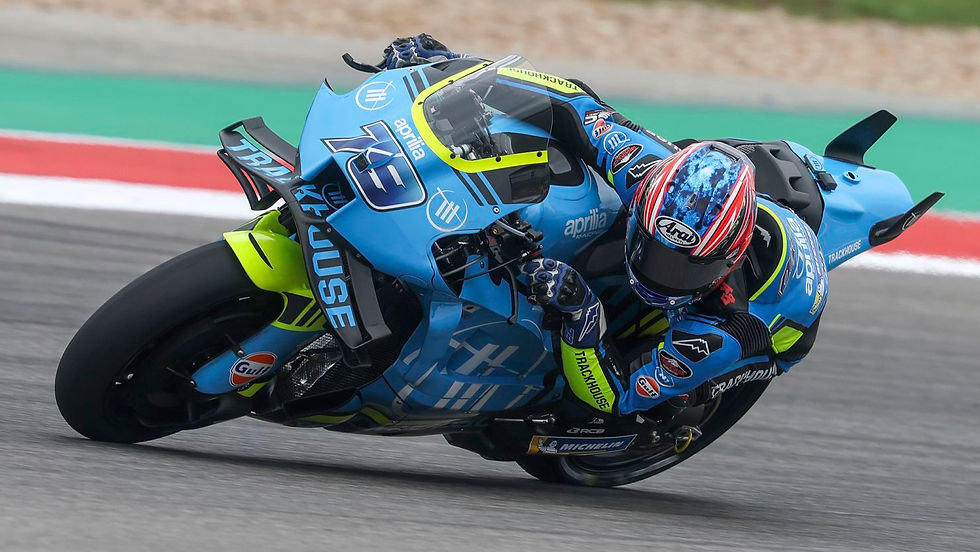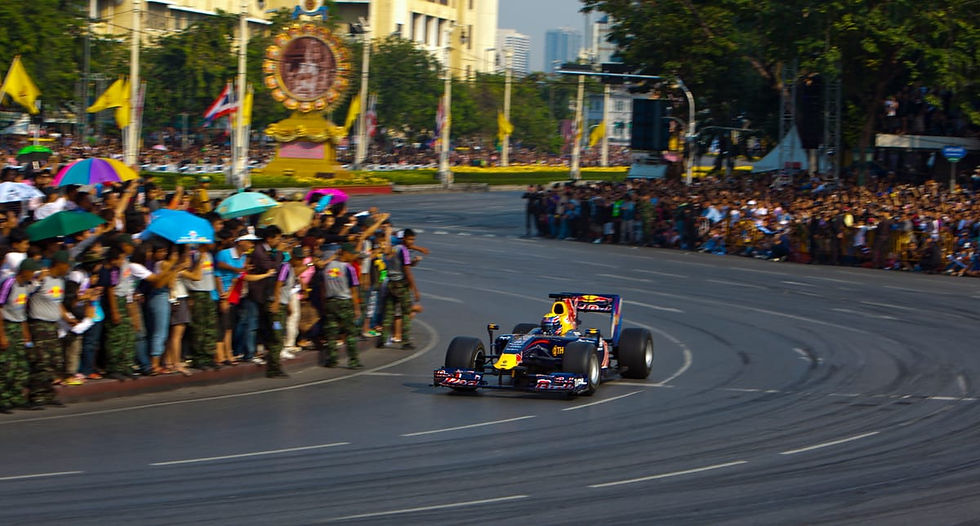This Week's Racing News and Developments: IndyCar’s Chassis, Liberty’s MotoGP Plans, and F1 to Thailand?
- RCAP Staff

- Jun 23
- 4 min read
The Motorsports Industry Has Some Major Developments Across IndyCar, MotoGP, and Formula 1
The world of motorsports is in the middle of a significant shift, with transformative changes across multiple series that promise to shape the future of racing. From IndyCar’s next-generation chassis to Liberty Media’s finalized acquisition of MotoGP, and from Formula 1’s Thailand expansion to Juncos Hollinger Racing’s investor search, the global racing scene is evolving on multiple fronts. Here’s a breakdown of the four biggest developments rocking the motorsports world right now.
IndyCar Unveils Bold 2028 Chassis Designed for the Future of Motorsports

IndyCar’s future took a major leap forward at Road America with the announcement of a brand-new chassis set to debut in 2028. The Dallara-built machine will be lighter, sleeker, and infused with new technology to elevate both safety and competition. While maintaining signature IndyCar aesthetics, the new car reflects modern motorsports values appealing to younger fans while honoring the legacy of open-wheel design. President Doug Boles acknowledged that the DW12 has delivered strong racing and safety performance since 2012, but after significant add-ons like the aeroscreen and hybrid systems, it’s time for a fresh start. Engineers are now building a car from the ground up that can meet modern demands and future ambitions.
At the core of the redesign are three key priorities: competition, powertrain development, and safety. The new chassis will be 85–100 pounds lighter than the current model, improving agility and acceleration across all four circuit types IndyCar races on superspeedways, short ovals, street courses, and road courses. Xtrac will continue as the transmission supplier, with a new gearbox shedding 25 pounds and integrating shared parts with the INDY NXT development series. IndyCar’s low-voltage hybrid unit, introduced successfully in 2024, will evolve in tandem with this chassis, offering more horsepower and longer deployment windows. On the safety side, drivers can expect an improved cockpit, integrated aeroscreen, and new roll hoop. With renderings and partner announcements still to come, IndyCar is clearly betting big on a new era of North American motorsports.
Liberty Media's MotoGP Acquisition Gets Green Light, Reshaping Global Motorsports
In Europe, the motorsports business saw a seismic shift as the European Commission officially approved Liberty Media’s $4.2 billion acquisition of Dorna Sports, the commercial rights holder of MotoGP. This final green light comes more than a year after the deal was first announced in April 2024 and clears the way for Liberty already the commercial owner of Formula 1 to now bring MotoGP under its umbrella. The EC determined that the acquisition wouldn’t harm competition in the European broadcasting market, despite some early concerns about Liberty’s dominant presence in motorsports media.

With the acquisition completed, Liberty now owns 86% of Dorna, while longtime CEO Carmelo Ezpeleta and CFO Enrique Aldama will retain a 14% stake. A joint working group will begin operating from Madrid this July to align MotoGP’s future strategies with Liberty’s broader motorsports portfolio. Liberty intends to apply the same media savvy that elevated Formula 1’s global reach including projects like Drive to Survive and the upcoming Brad Pitt-led F1: The Movie to the motorcycle racing series. The goal is to tap into untapped commercial potential, especially in underdeveloped markets like the United States. For Dorna, which has faced commercial stagnation in recent years, the acquisition signals a fresh start. With Liberty’s financial and media muscle, MotoGP could finally break into the global mainstream the way F1 has, solidifying its place in the upper echelon of international motorsports.
Thailand Set to Host Formula 1 Race in 2028 as Global Motorsports Expansion Continues
Formula 1 continues its international expansion with the Thai government submitting a formal proposal to host a Grand Prix in Bangkok starting in 2028. Following months of talks with F1 CEO Stefano Domenicali and the support of Thai Prime Minister Paetongtarn Shinawatra, the Thai cabinet has approved a $1.2 billion plan to stage a five-year event on a street circuit in the Chatuchak Park area of the capital. The project aligns with Thailand’s growing investments in tourism and is expected to generate major economic returns through job creation, tourism revenue, and global exposure.

This marks a significant win for Southeast Asian motorsports fans, especially with Thai-British driver Alex Albon acting as a vocal supporter. Albon, the country’s first Formula 1 driver since the 1950s, has met with officials multiple times and believes the nation is well-positioned to host a world-class event. The proposed race could attract 300,000 fans over the race weekend and generate over $400 million in economic activity annually. It’s a key part of Liberty Media’s ongoing efforts to grow Formula 1 in new markets especially in Asia and the United States while also ensuring private-sector investment leads the way. With a memorandum of understanding already in place, and local media confirming government commitment, the Thailand Grand Prix is shaping up to be one of the most exciting new additions to the motorsports calendar.
Juncos Hollinger Racing Seeks New Partner as IndyCar Team Builds for the Long Term

Back in the U.S., one of IndyCar’s smaller but ambitious teams Juncos Hollinger Racing is actively seeking a new investor to join its ownership group. Co-owner Brad Hollinger, who helped resurrect the team in 2021, says he’s been shouldering nearly the entire financial burden and now wants to bring in a strategic partner to help scale operations and boost competitiveness. Despite positive momentum in 2025 including Conor Daly joining as a primary driver and Sting Ray Robb filling the second seat via a funded ride Hollinger says the next step for the team is serious investment in research, development, and technology.
Guided by former F1 team manager Dave O’Neill, JHR has already enhanced its engineering staff and built out its commercial division. But for Hollinger, the big leap forward in motorsports requires capital. Plans include boosting simulator capabilities, increasing AI integration, and attracting top-tier talent to close the performance gap with IndyCar’s heavyweights like Penske and Ganassi. Hollinger, who still retains ties to Formula 1 through his past investment in Williams, is open to various forms of partnership whether private equity, individuals, or institutions. He’s also open to rebranding the team if the right partner comes aboard, following a model seen with Meyer Shank Racing or Rahal Letterman Lanigan. Juncos Hollinger Racing’s next chapter could hinge on finding the right ally in the ever-competitive motorsports landscape.








Comments